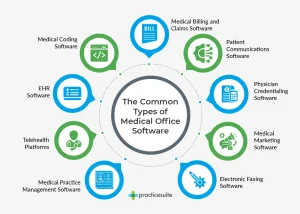
Customer feedback is an integral component of improving products and customer experiences; without it, product management and customer success teams would be operating blindfolded.
Consumers now find it easier than ever to express their thoughts – both positive and negative – with unprecedented ease. This vast reservoir of feedback holds immense promise to improve customer relations, enhance product and service offerings, and more.
1. Identify Your Key Performance Indicators (KPIs)
KPIs can be measured against various qualitative and quantitative metrics. Most often they’re related to specific business objectives like revenue, profit, cost savings or customer satisfaction; but KPIs may also take the form of product performance (i.e. units sold, issues resolved or bugs fixed) or organizational processes like marketing, sales or human resources.
No matter what form a KPI takes, it should be clearly communicated across an organization in order to ensure all employees and stakeholders understand its purpose, how it will be measured, and its contribution towards meeting overall strategies and goals.
Leading indicators can often be more useful KPIs when it comes to predicting future results than tracking outcomes that have already taken place – for instance, revenue per client (RPC). When selecting KPIs to measure and track, it is a good idea to select ones relevant to current company goals.
2. Analyze Your KPIs
Customer feedback collection without analysis can be rendered useless, especially if it’s spread across different platforms and spreadsheets managed by different teams. When data is dispersed across these multiple channels and spreadsheets it becomes challenging to recognize trends or detect themes.
As customers’ expectations are ever-evolving, it is vital that KPIs be evaluated regularly so that any necessary adjustments can be made as necessary.
Successful businesses rely on feedback – from praise to complaints – as a guide for strategic direction and performance improvement. Successful businesses understand that their customers know best what products and services they require from them, which is why successful businesses listen and engage with customers so they can provide the best experience. In these moments they often gain candid, authentic insights which lead to lasting customer relationships and higher satisfaction ratings for all parties involved.
3. Identify Your Key Performance Drivers (KPDs)
If your feedback data is spread across various systems, it can be challenging to recognize and interpret its themes. Furthermore, this means it may be more likely that important feedback gets missed due to not centralizing it properly.
Your KPIs should reflect both the key objectives of your business and each team’s responsibilities, for instance an IT team’s goal could be reducing response times for customer requests while customer success teams may look to increase customer satisfaction rates.
As part of creating a centralized feedback hub, determine the most efficient means of collecting and synthesizing all this data. This decision depends on many factors including your organization’s size, stakeholder needs and goals, how you plan on disseminating and using this information – some organizations utilize spreadsheets or Trello boards while others opt for more robust platforms like Pendo Feedback to organize feedback triage.
4. Evaluate Your KPDs
An effective customer feedback process enables the entire organization to easily gather user insights through surveys or voice of customer interviews, making sure that everyone understands how to collect and prioritize customer feedback for product improvement.
If customers are unhappy with their online purchasing experience, they might express their displeasure through a survey. By sharing this feedback with you and providing solutions, this feedback provides an opportunity to reduce customer churn and position your brand for expansion.
Customers tend to provide honest feedback immediately following an interaction, such as after speaking to customer service or purchasing online. That is why it is crucial to collect customer feedback in real time, prioritizing feedback themes so as to address your most urgent issues first – Pendo’s feature request prioritization tool can help identify popular requests and determine how soon your team should address them.






